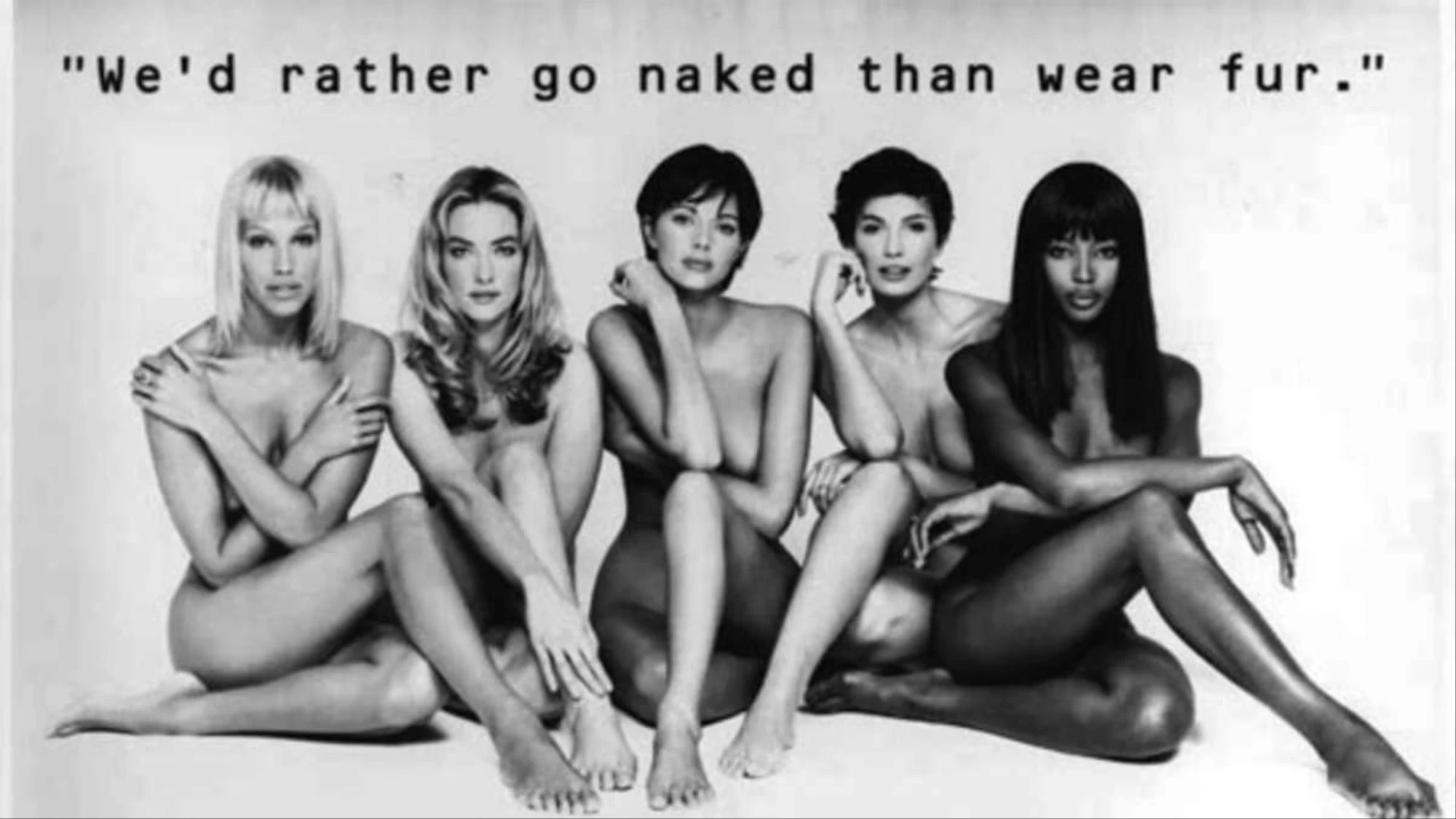If you ask i-D, fur was never in fashion to begin with — furs and exotic skins have been banned from our pages (both in print and online) throughout our 38 year history. But the move to a more ethical, fur-free future has spread rapidly through the industry in recent years, with anti-fur stalwarts like Stella McCartney being joined by Armani and The Kooples in 2016, and Gucci and Michael Kors in 2017.
Giorgio Armani announced the ban by noting that, “Technological progress made over the years allows us to have valid alternatives at our disposition that render the use of cruel practices unnecessary as regards animals,” and The Kooples said they were “extremely concerned by animal suffering” after working with PETA (People for the Ethical Treatment of Animals). Gucci’s transformational creative director Alessandro Michele banned fur, with the brand’s president and chief exec Marco Bizzarri explaining simply that fur is “outdated” and “not modern”.
This week, the ethically fraught industry took another blow, with the Norwegian government agreeing to ban fur farms in the country, phasing them out by 2025. Once a big “producer” of fur (we know who the real producers are, after all), Norway once exported the most fox fur in the world, and still produced around 1 million fox and mink pelts (that’s 1 million dead animals) in 2017. The decision has been welcomed by animal rights activists and ethical consumers alike — and rightly so. However, the ban was less initiated by a desire to protect animals, and rather more so that the Conservative Prime Minister Erna Solberg could count on the anti-fur Liberal party to expand her two-party minority government. It’s rather like Theresa May’s £1 billion dirty deal with the DUP, except the result in Norway is saving animals, not propping up an anti-women’s rights, anti-gay rights, anti-abortion, creationist party.
Norway aren’t the first country to ban fur farms. The industry is banned in the UK, Germany, Austria, Croatia, and from 2019 in Czech Republic; and, while not implementing a full ban, Switzerland and Japan have strict regulations that have closed all the fur farms that were in operation. After “serious welfare issues” and escaped mink (an invasive, non-native species) were found by Animal Rights Center Japan, the last Japanese fur farmer said that “decreased consumer demand and the high building costs to meet the licensing requirements” made the farm “no longer economically viable,” according to the Fur Free Alliance.
“Could the shuttering of more strictly regulated European farms mean that more fur will be bought from China, where the horrendous treatment of animals has been extensively documented?”
The fur trade in Norway had massively decreased since its height in 1939 — when it was the biggest producer in the world with almost 20,000 farms, according to Reuters. “It’s not a very lucrative business in Norway,” Sveinung Fjose, an economist and fur farm expert, told the news agency. “It wouldn’t harm the Norwegian economy severely [to close it down],” he said. In 2013, Norway were responsible for only 3% of the 7.3 million foxes killed for their fur worldwide (with the most deadly industries in China, where 69% were killed, and in Finland); and 1% of the 72.6 million mink killed, with Denmark and China being the biggest killers of mink.
Could the shuttering of more strictly regulated European farms mean that more fur will be bought from China, where the horrendous treatment of animals has been extensively documented? Mimi Bekhechi, Director of International Programmes PETA, thinks not. “There’s no such thing as ethical fur,” Mimi says, “which is why the switch we’re seeing designers and consumers making isn’t from choosing fur from one country to choosing it from another, but from using real fur to using faux, vegan alternatives.” Norway’s ban will help to erode the PR image of European fur being an “ethical” option, Mimi says. “Companies tout fur from countries like Norway as coming from farms with ‘higher welfare’ standards,” she explains. “As the cruelty occurring on fur farms across Europe is made public — or they’re shut down — this marketing tactic is being exposed as false and redundant.”
Marketing tactics such as the “Origin Assured” stamp — which was intended to at least suggest the ethical treatment of animals — have been debunked by exposés like PETA’s film Cruelty Assured. The graphic film includes footage of animals at Origin Assured farms in Denmark, Finland, France, Italy, the Netherlands, Norway, Poland, Sweden and the US, showing that they “suffer from neglect, starvation and thirst and often have untreated, bloody wounds”. “Many animals go insane as a result of their confinement, and some are driven to self-mutilation and cannibalism. Dead animals are left to rot, often in cages next to their desperate family members,” the PETA investigation found.
Though China remains the biggest importer of animal skins and the biggest exporter of fur products in the world, domestic demand for fur has plummeted in recent years. Even the pro-fur lobby, We Are Fur, admit that the fur industry shrank from 2015 to 2016, with Chinese mink “production” falling 41.2% in 2016. And though China is the biggest market for fur, the European fashion industry still has immense power to drive trends around the world. With both young designers and huge fashion houses like Gucci and Armani rejecting fur — with a petition asking the British Fashion Council to ban fur reaching 231,967 signatures — and Kendall Jenner (now the top earning model in the world) catching serious flack for choosing to wear fur in Milan, perhaps we really are witnessing the final flail of a death industry meeting its natural conclusion.
